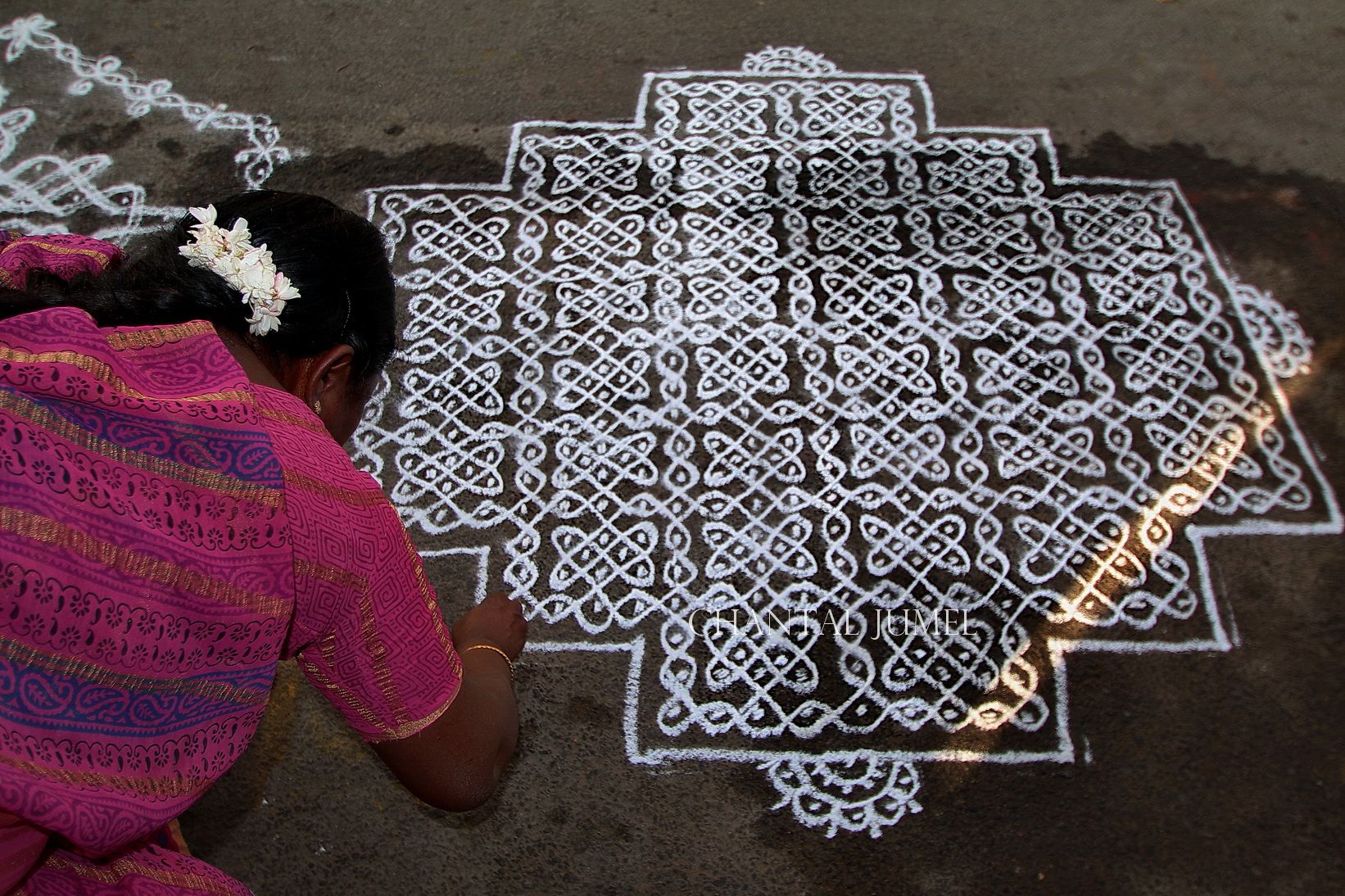Sikku kolam or interlaced kolam
Kolam made by a single continuous line or several lines running around dots are called sikku kolam and exist to my knowledge only in Tamil-Nadu. They distinguish themselves from other kolam by their entangled lines.
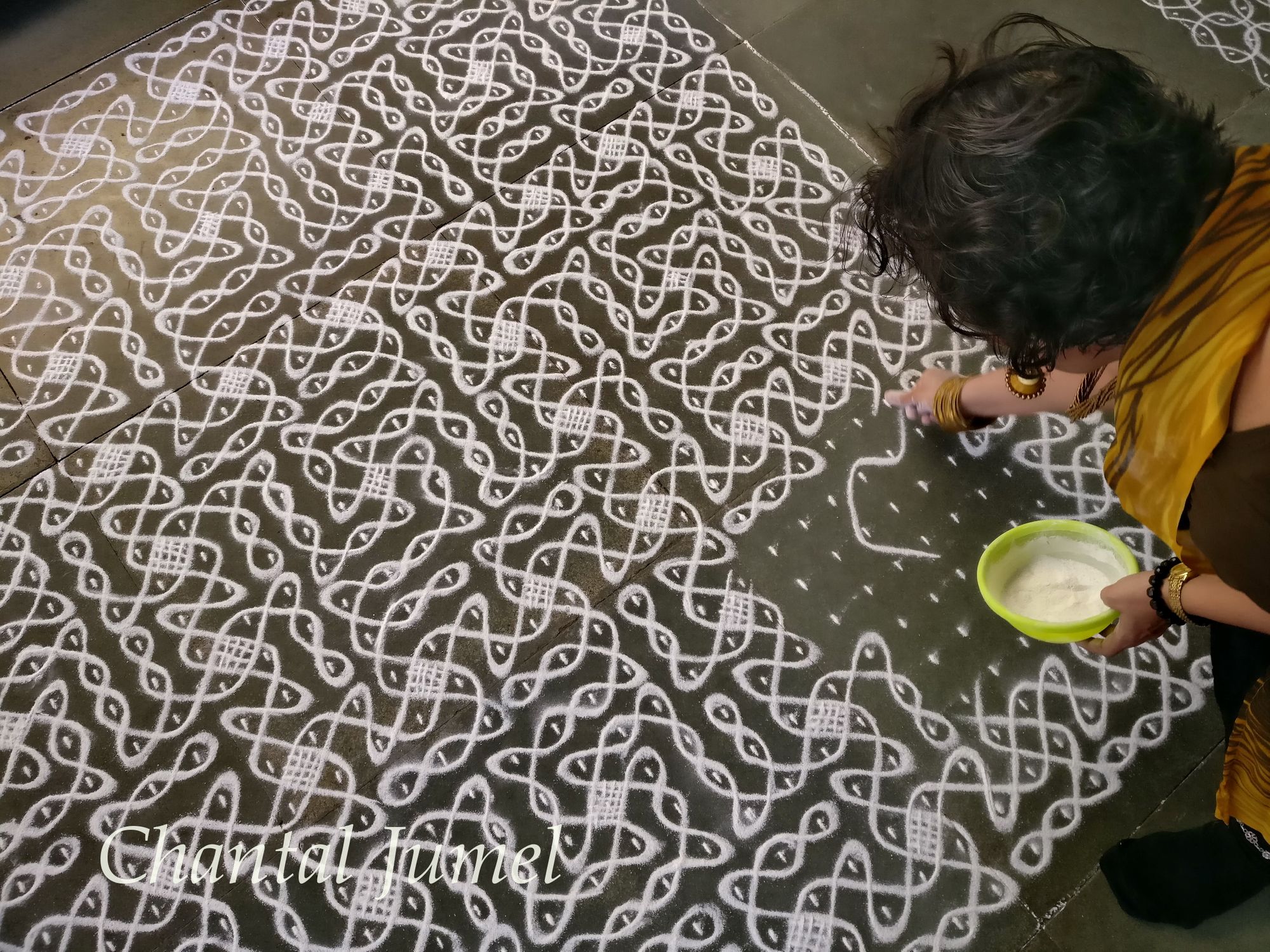
Kolam made by a single continuous line or several lines running around dots are called sikku/chikku kolam and exist to my knowledge only in Tamil-Nadu. They distinguish themselves from pulli kolam by their entangled lines. They are also called neli kolam (curvy kolam), and kambi kolam (wire-like kolam). These curves and spiral drawings creating rhythm by repeating the same graph, will catch the eye of every passer-by because they are for the most complex ones, difficult to memorize.
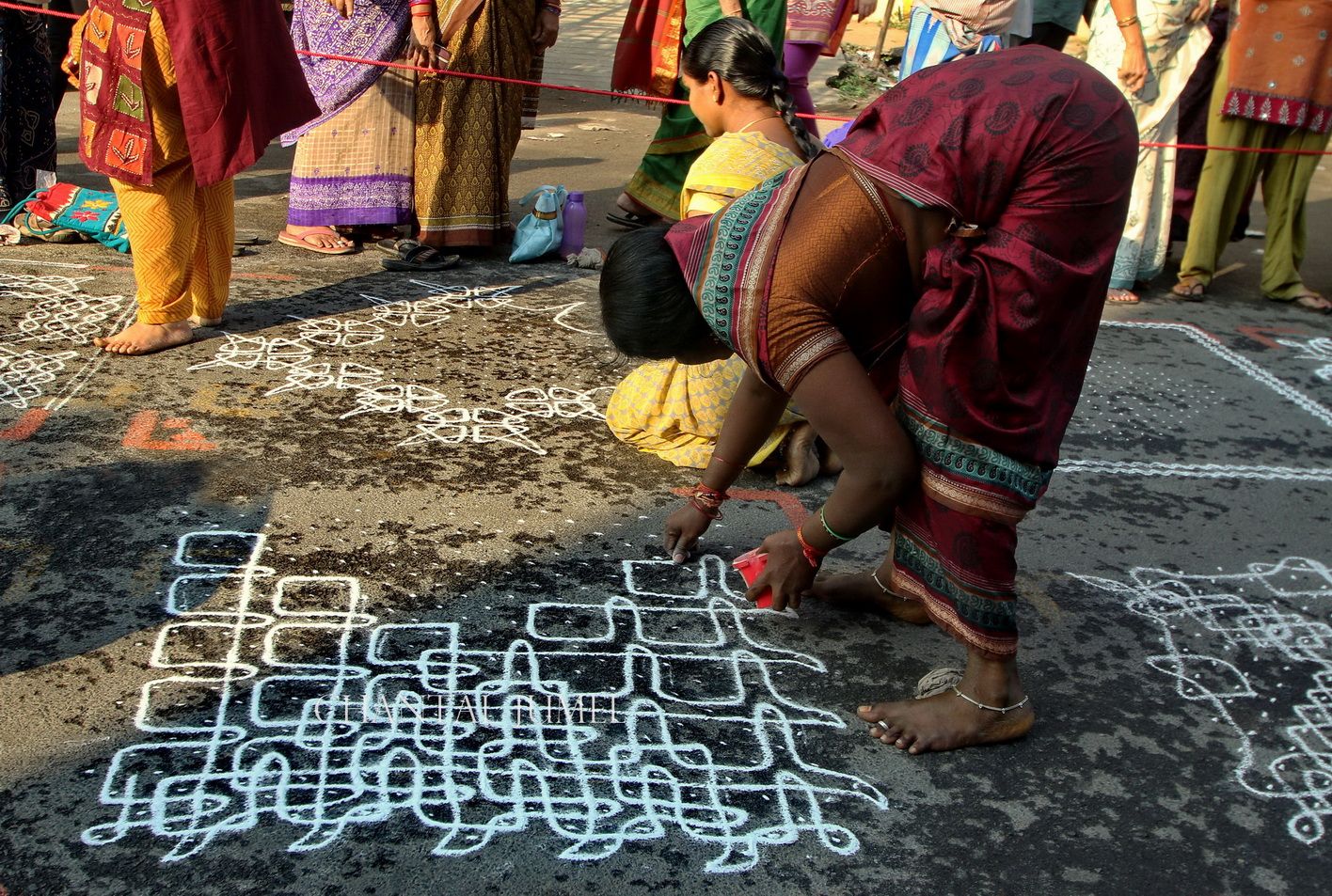
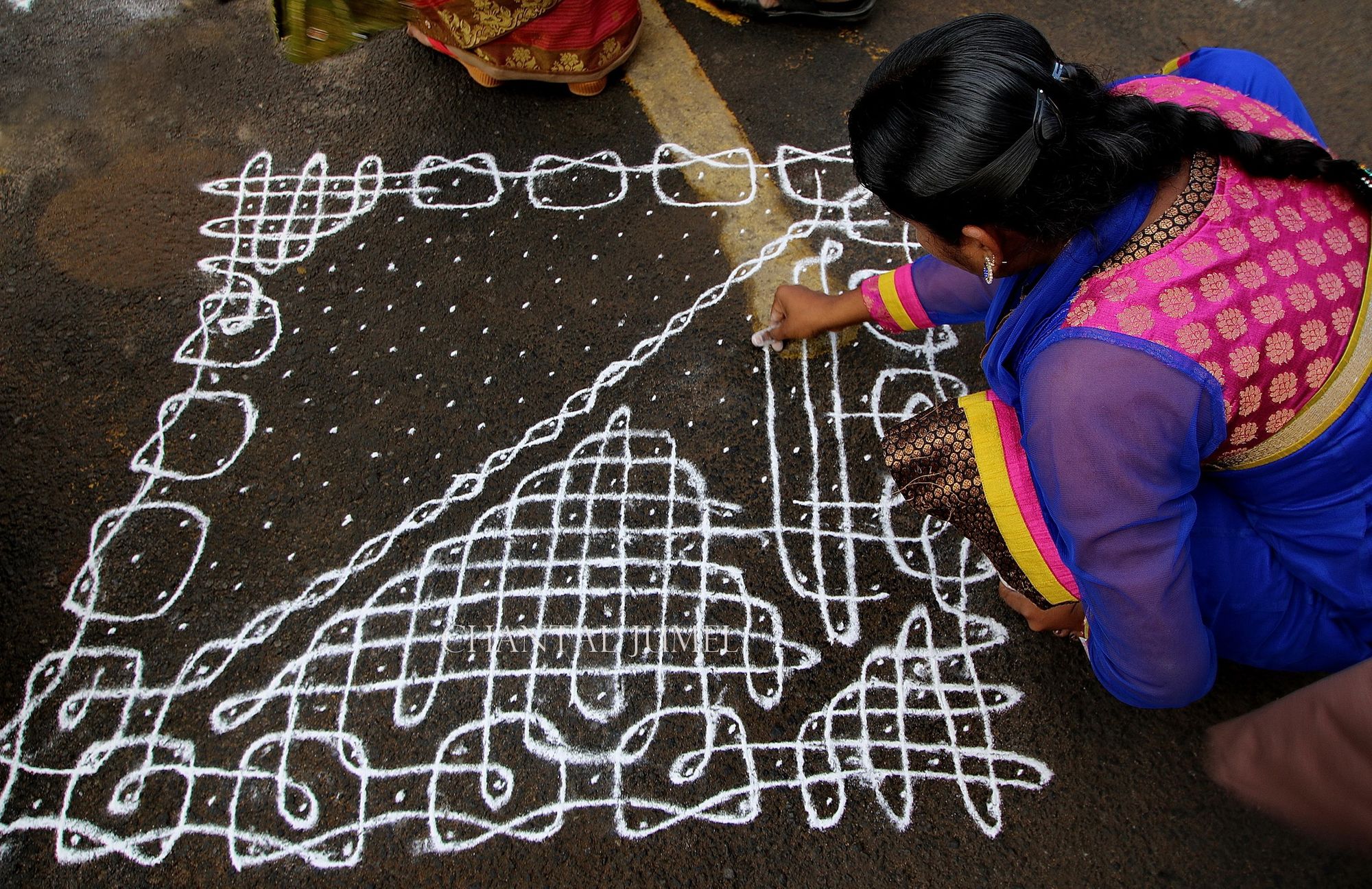
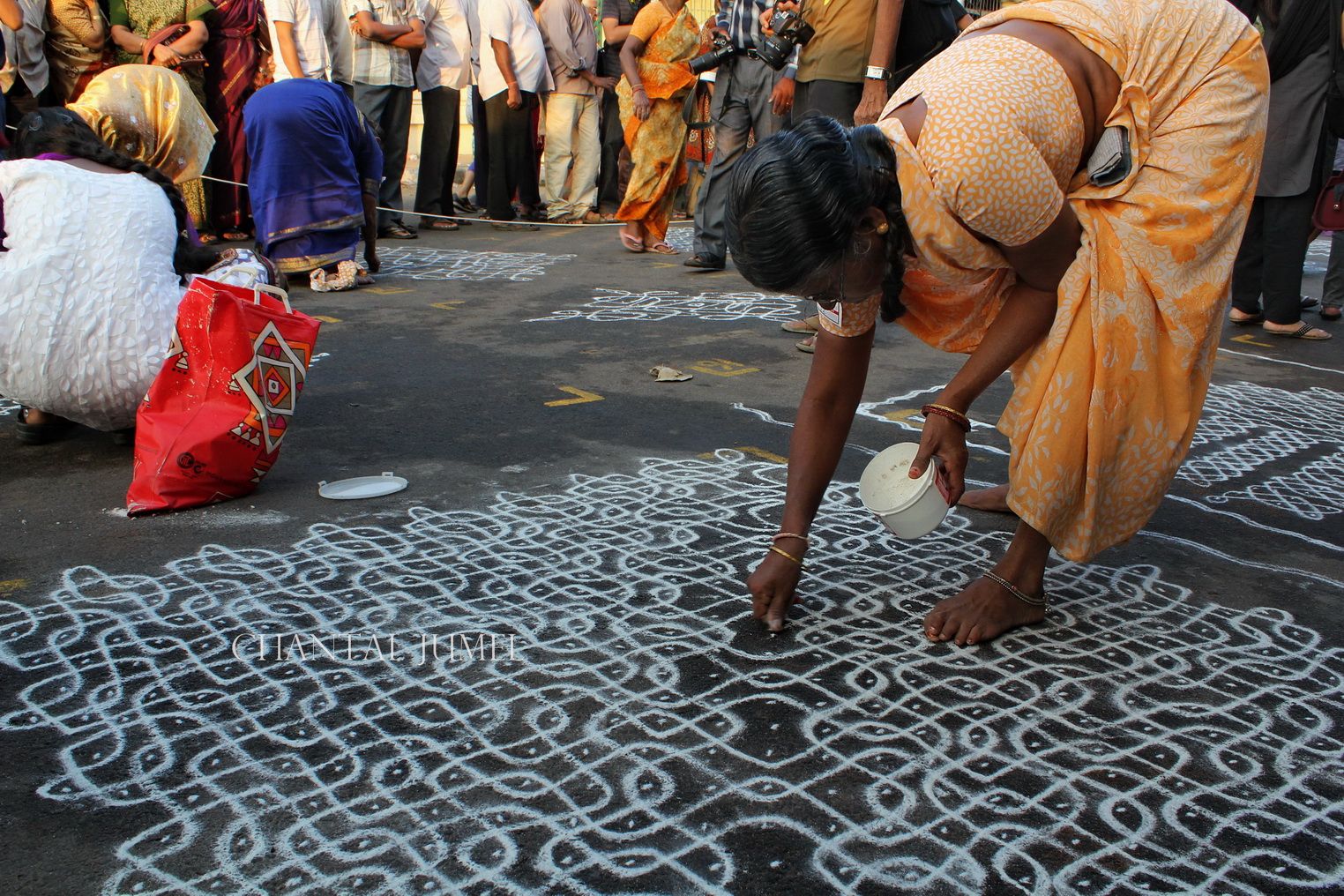
A few kolam artists whom I met, believe that the dots stand for the difficulties in life, while the unbroken lines embody the divine principle; an unalterable thread that meanders between the powdery mounds of adversity before dissolving at the point where creation and dissolution merge. Regarding the creation of a sikku kolam, a kolam made up of interlaced lines like those of a labyrinth, one friend feels that it is preferable to limit the number of them to avoid family conflicts and complications in daily life. Some women, however, feel that those who master the art of interlaced kolam designs are better positioned to resolve and withstand the trials of life.
Drawing sikku kolam
The sikku kolam directory includes nose ornaments, arm rings, crowns, thrones, gopuram (pyramidal entrance gate of a temple), or ritual objects as rose water sprinklers, vases for melted butter, and oil lamps. We also find depictions of palanquins, temple chariots, or cradles.
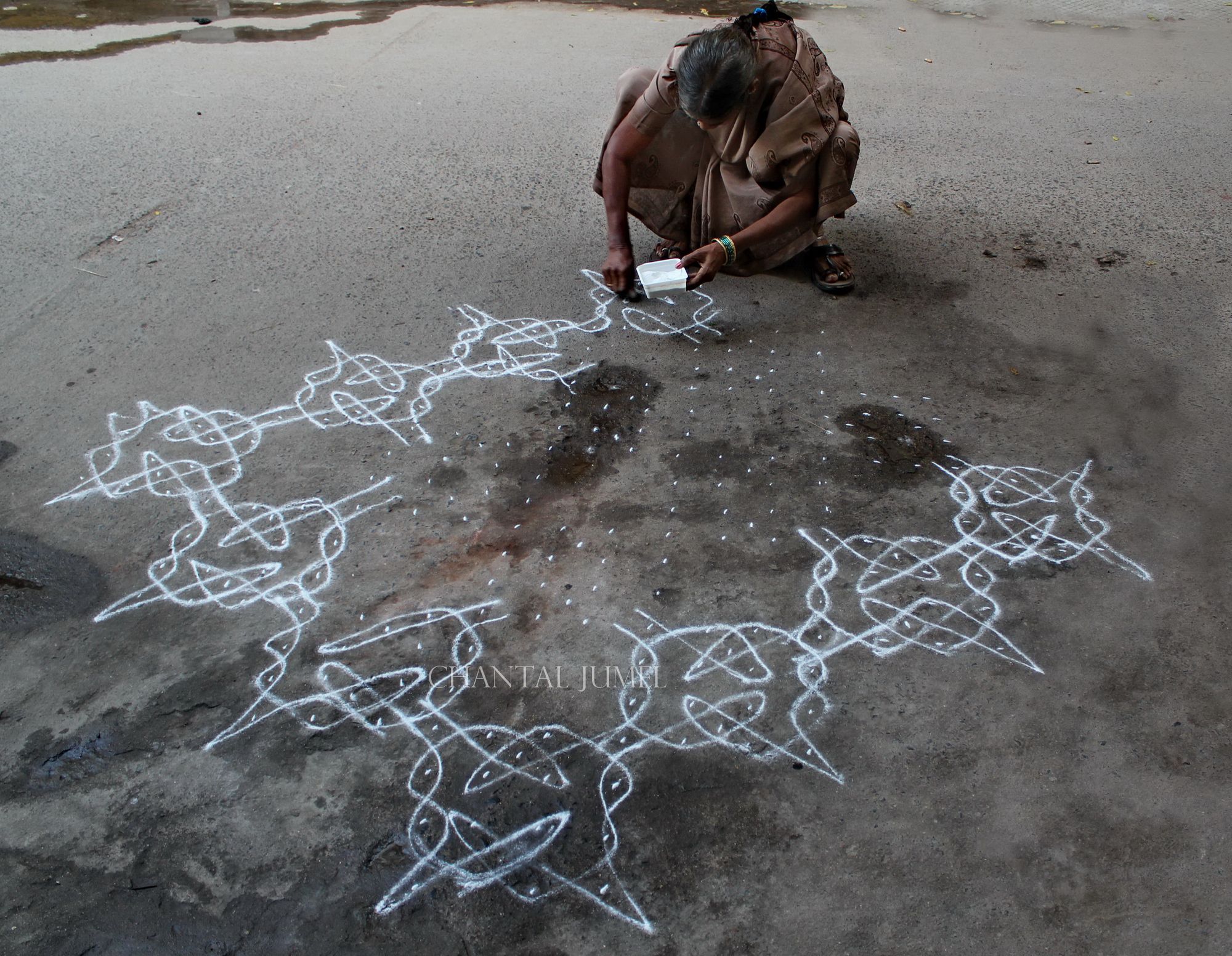
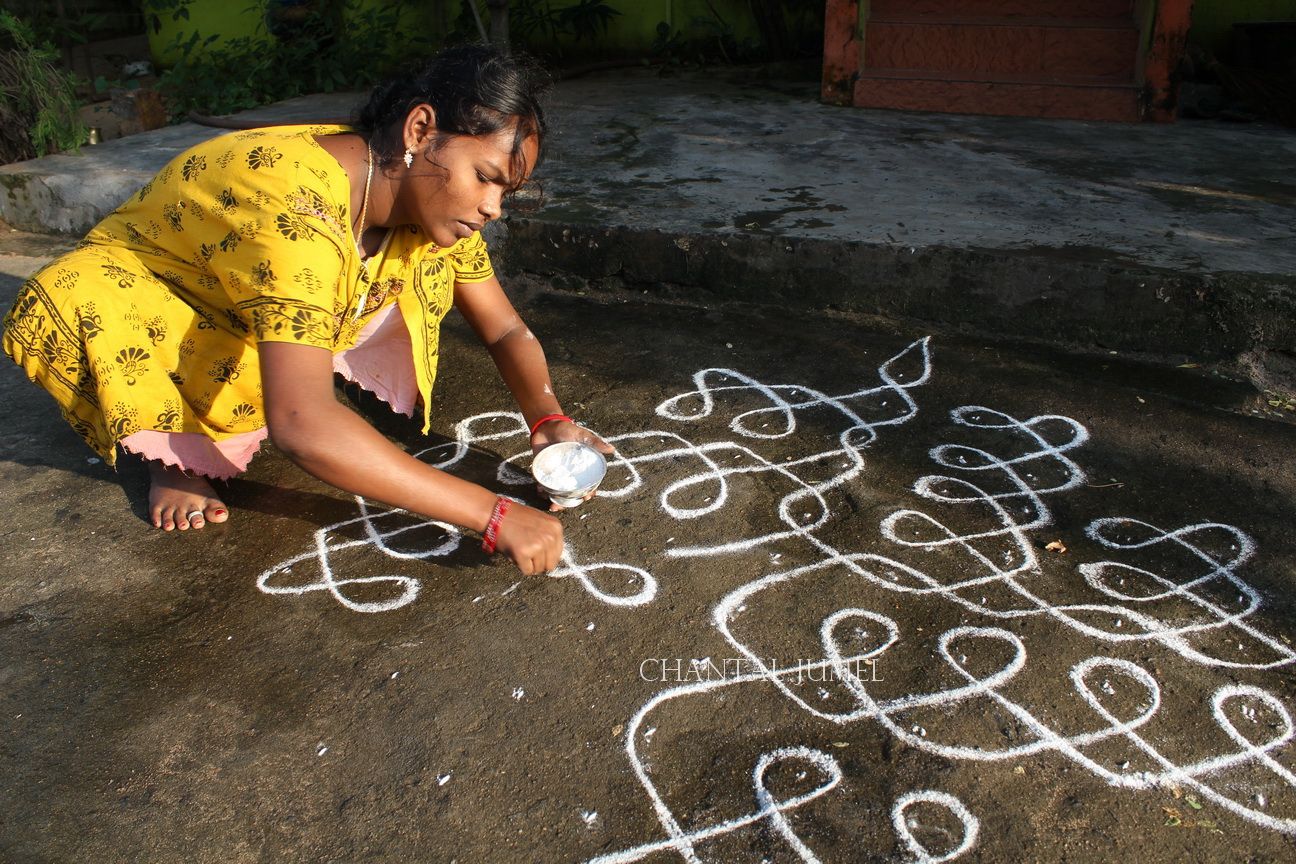
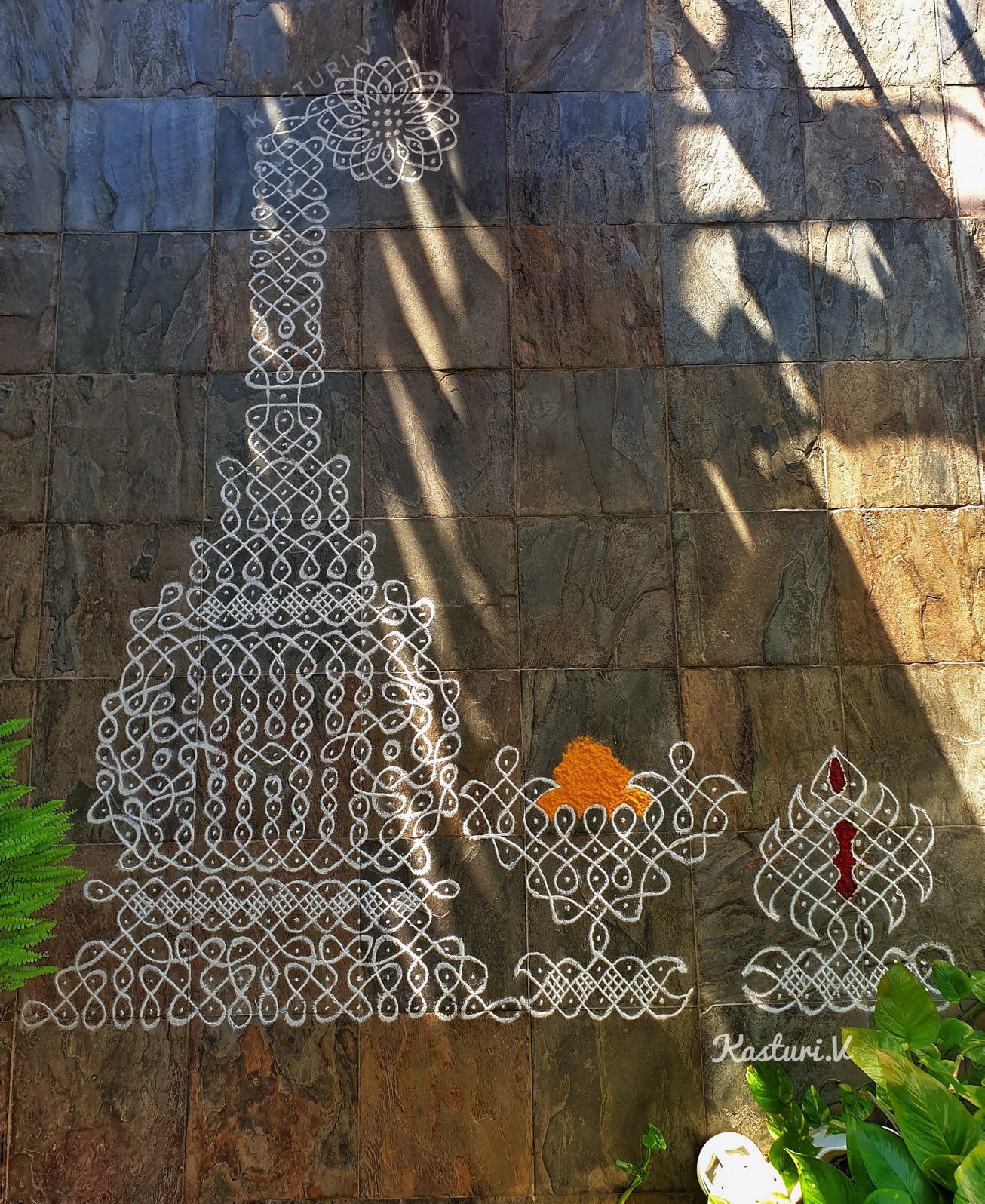

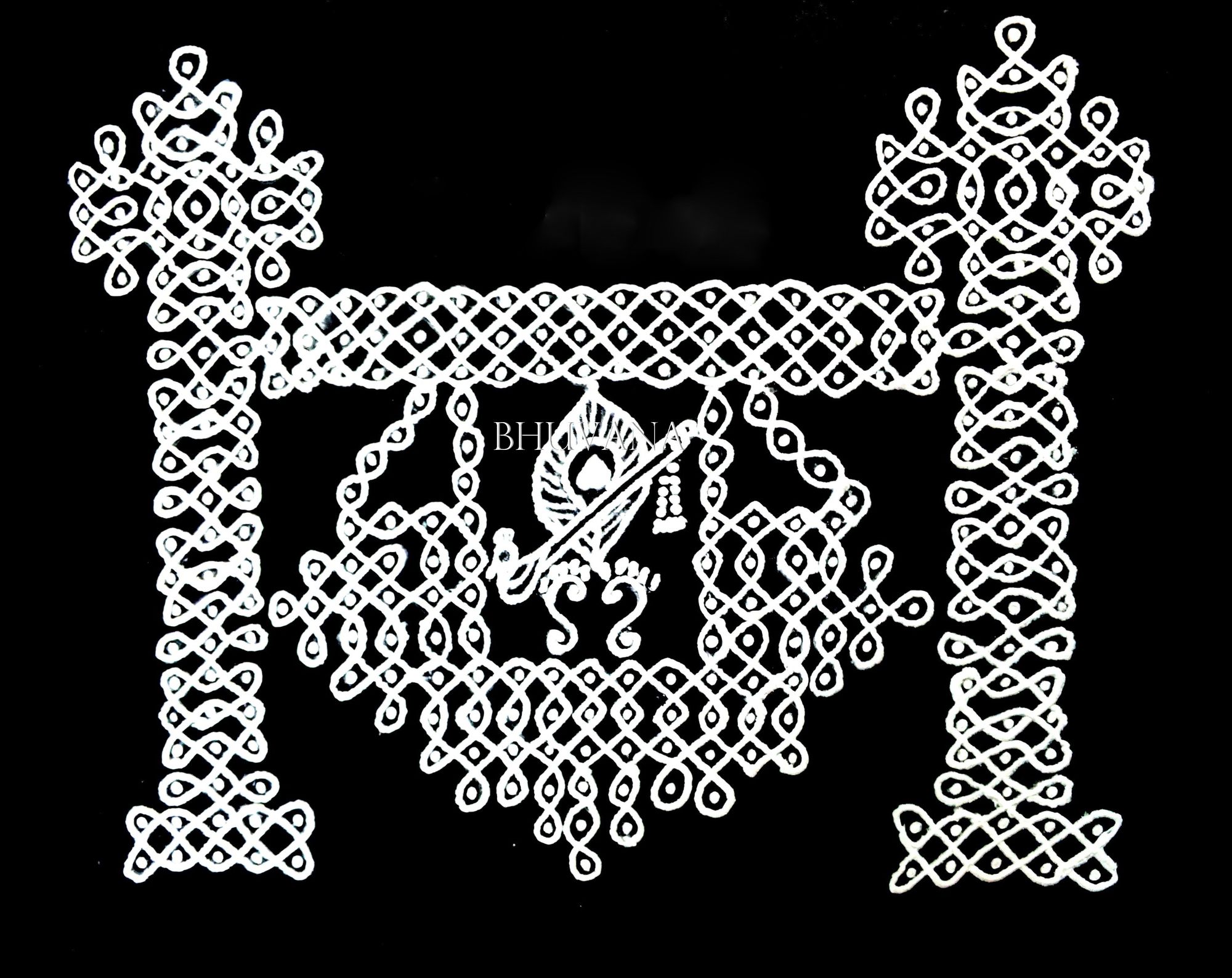

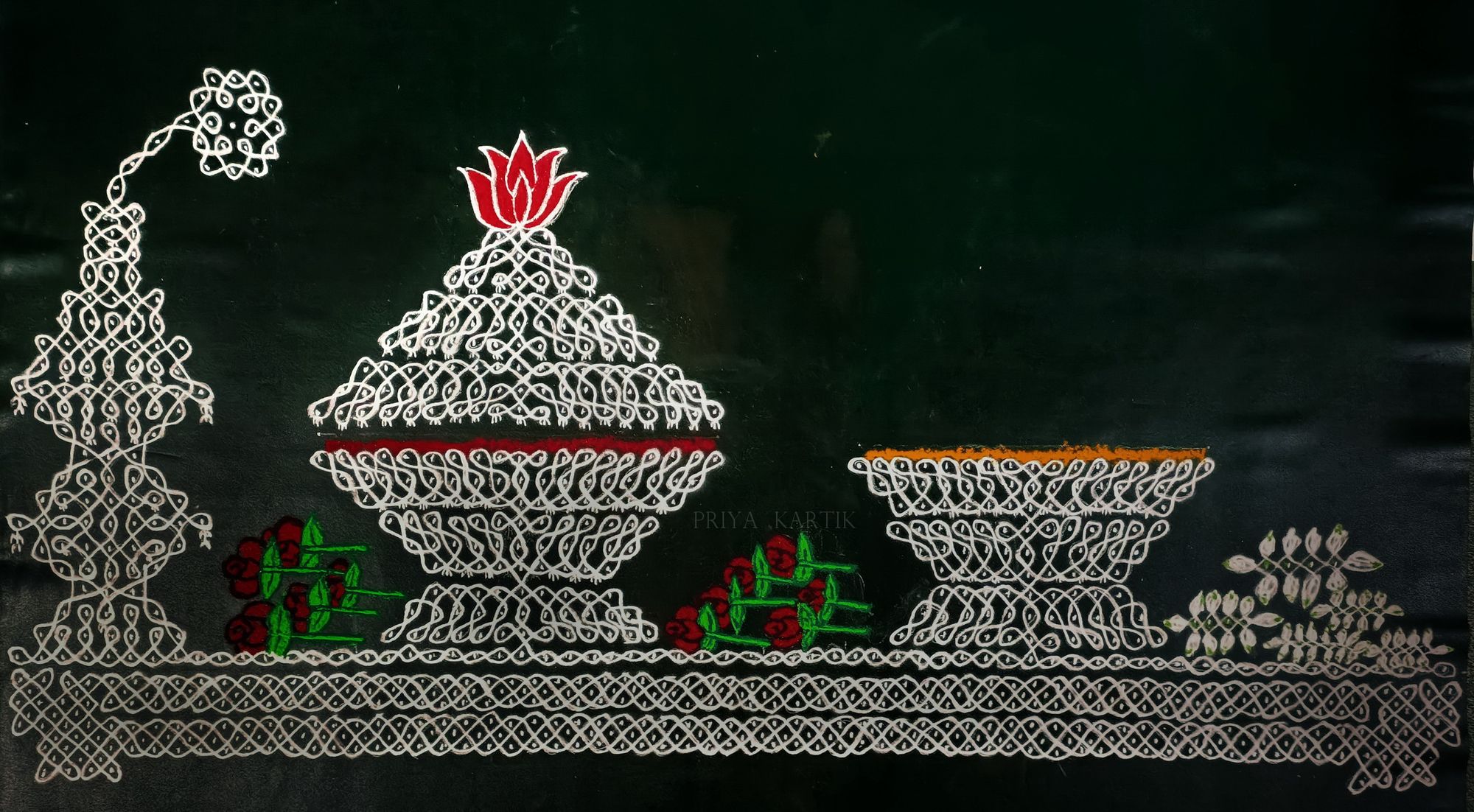
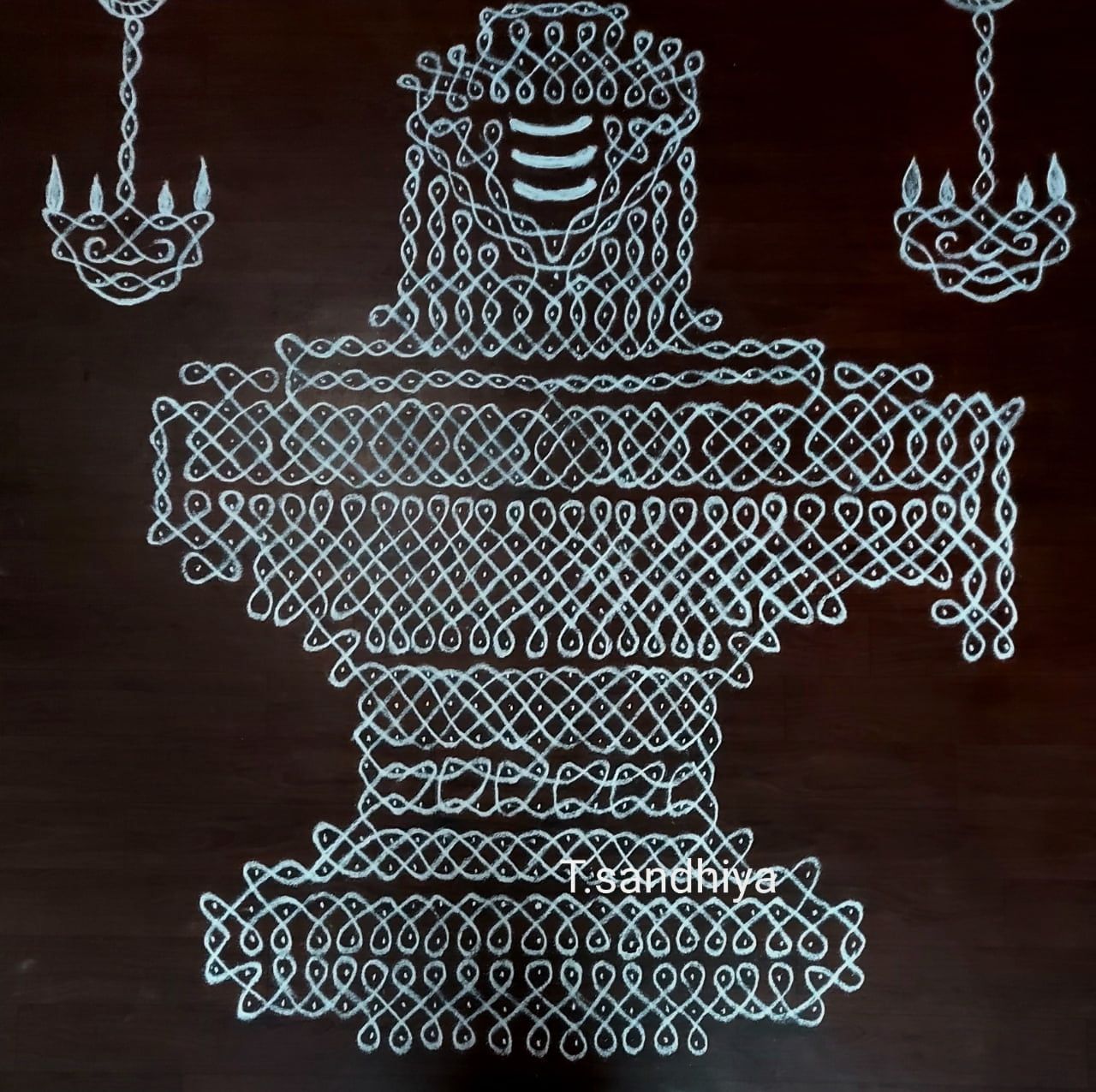
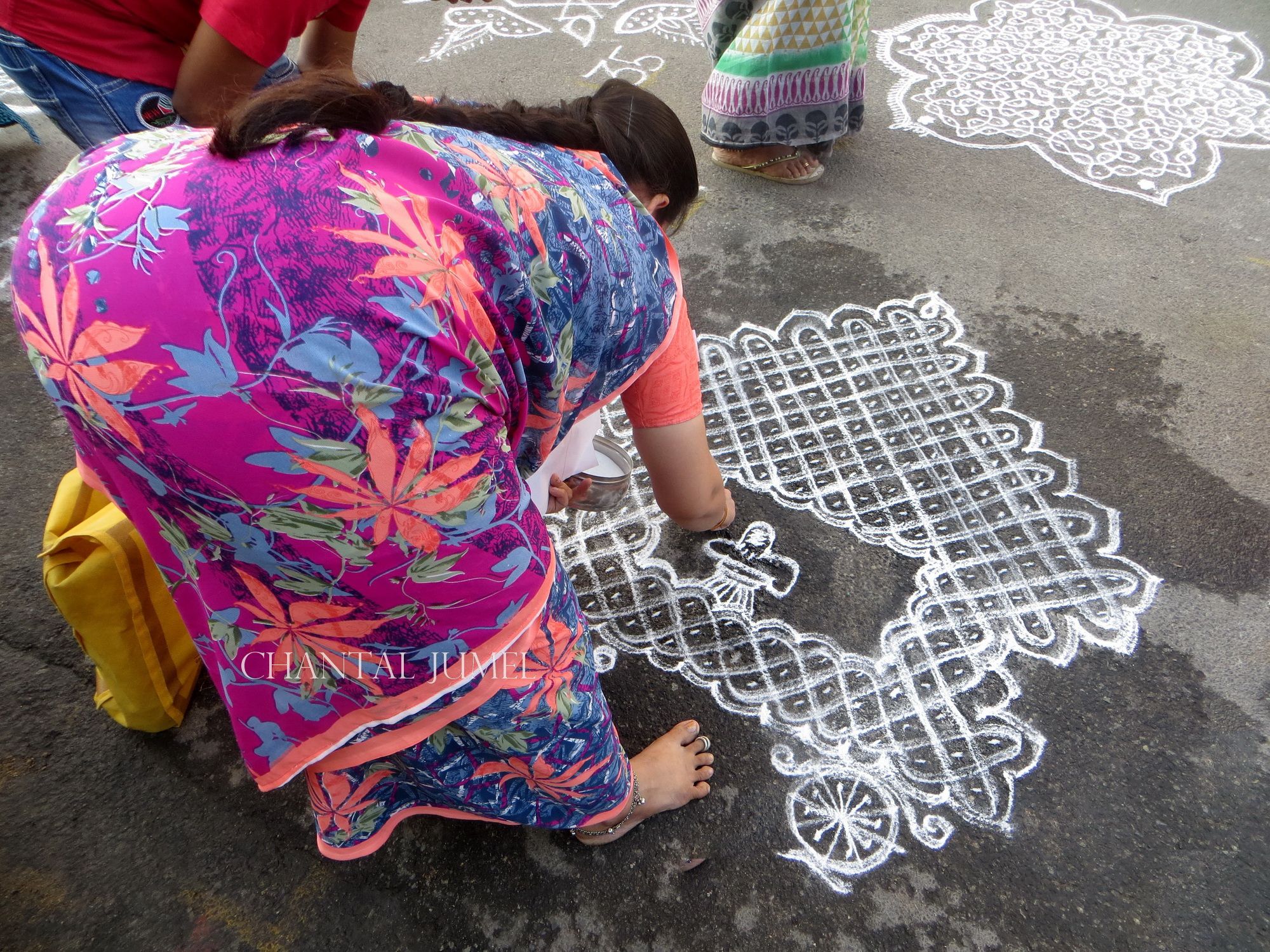
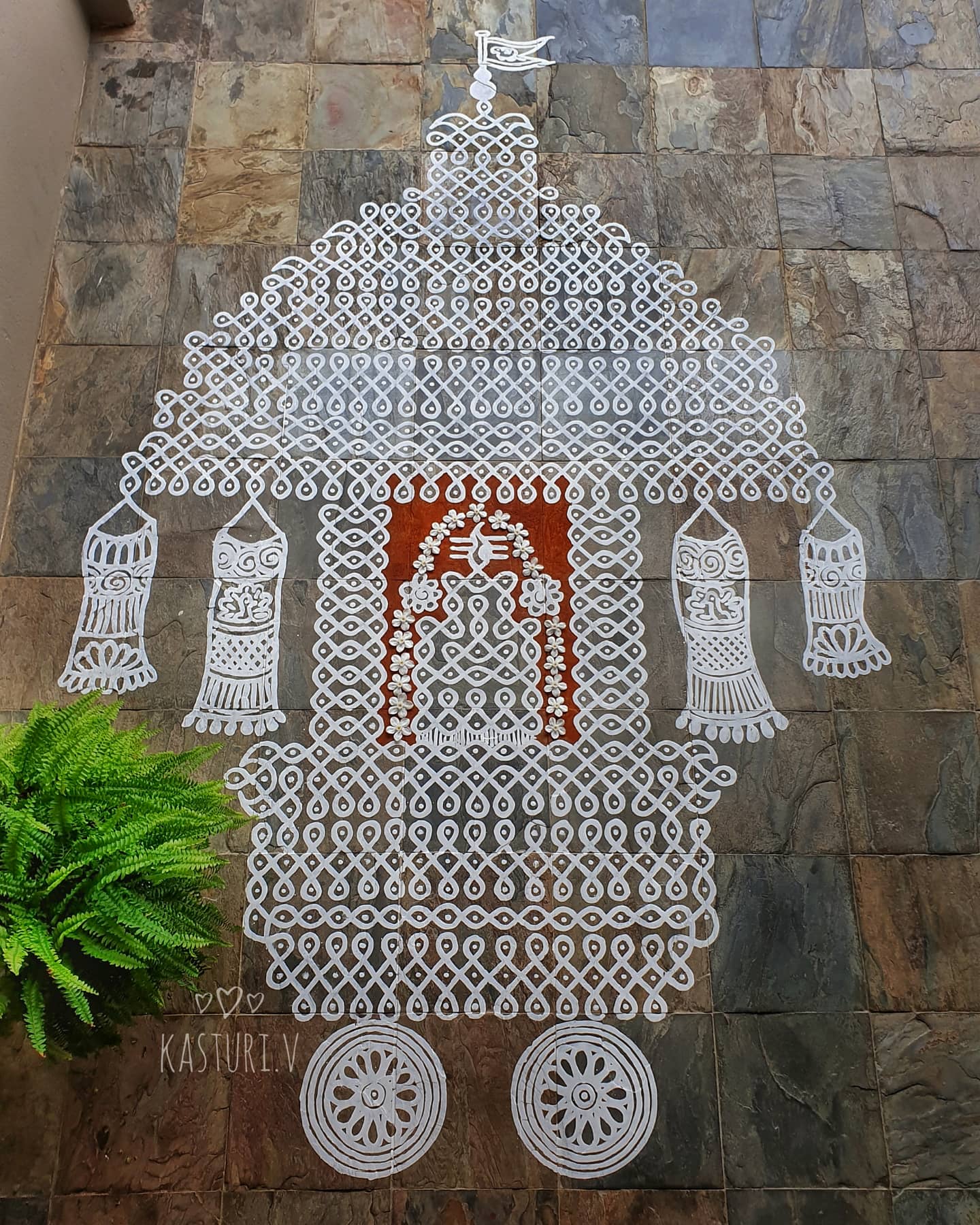
Sikku kolam like Celtic knots
In recent years, some sikku kolam enthusiasts have appropriated and revisited the art of Celtic knots, which they refer to as "Celtic knot kolam". The aesthetic between the two forms of drawing is close, except for the grid of dots which remains visible for the sikku kolam while it vanishes in the art of Celtic knots. On the other hand, in the sikku kolam, lines cross each other, “over and under” at each intersection like the entwined Celtic knots.
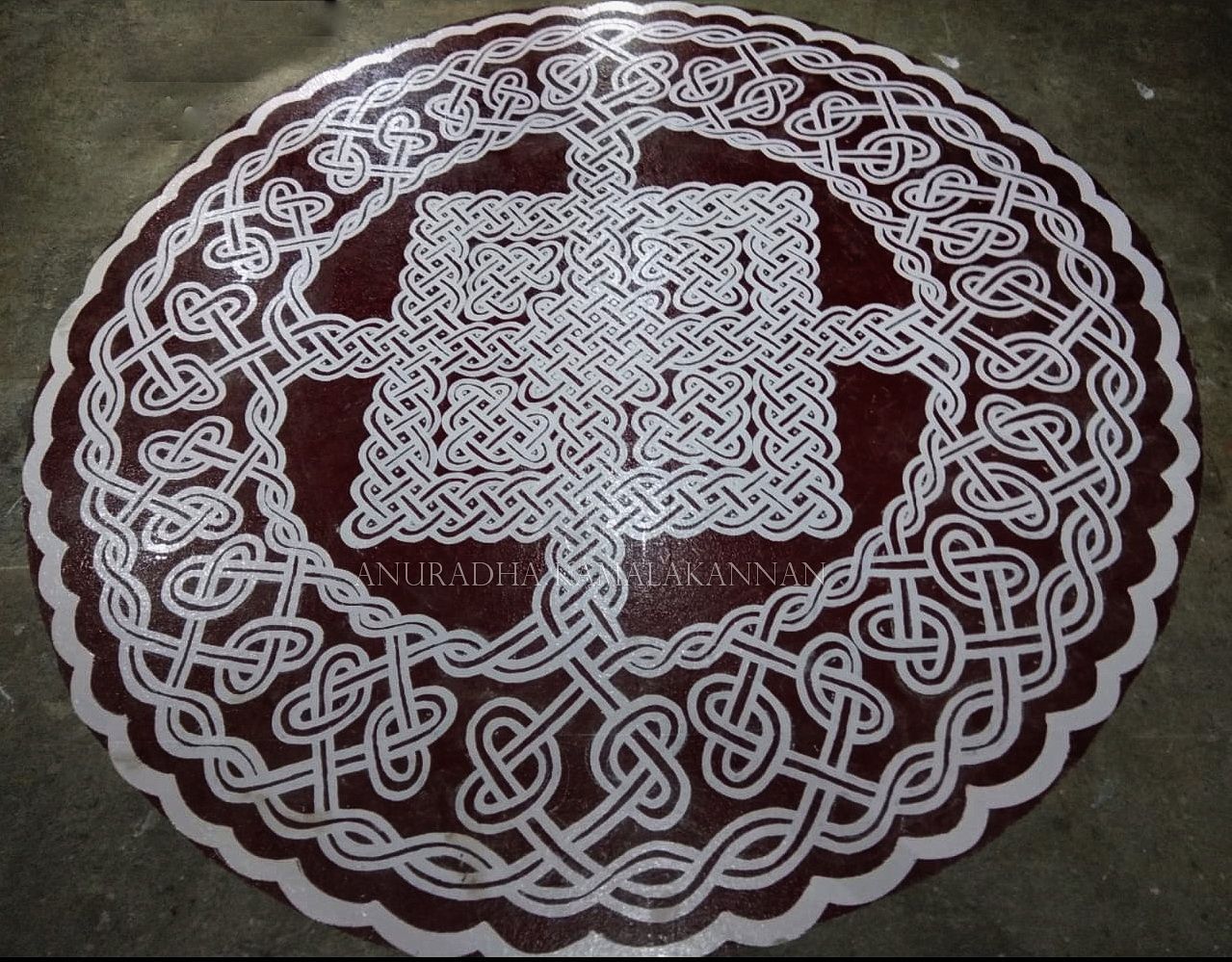
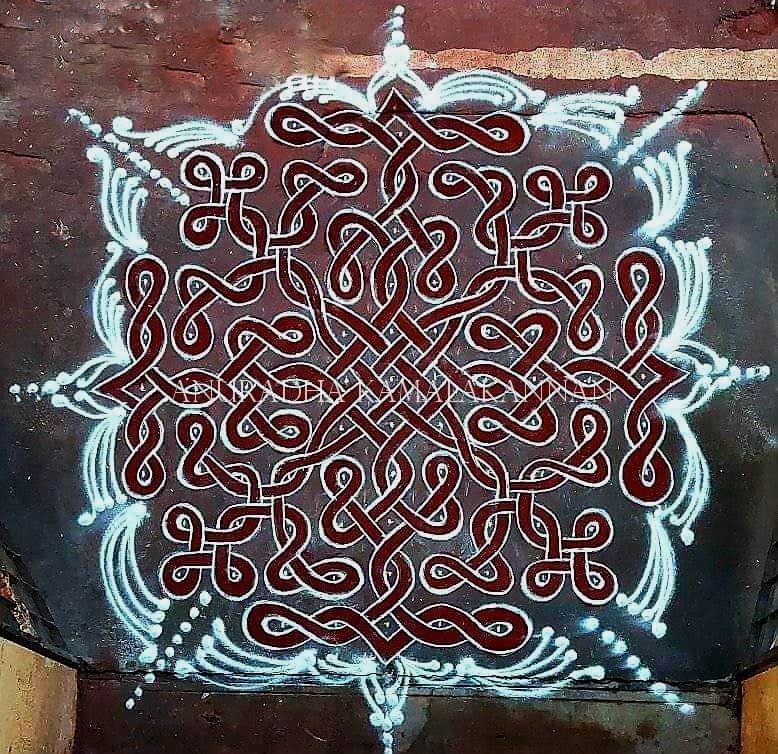
Sikku kolam and coloured lines
At times for some women, the austere white lines make them crave colours. The mystery and beauty of a sikku kolam lies on the inability to distinguish the start and the end of the lines shaping its structure. This dynamic linear diagram is weakened by the colouring of the lines, and this makes the creation process visible. Instantly, the sinuous choreographies of stretching and twisting that highlight the complex interactions of life lose their mobility; the lines break to become boundaries. These colourized sikku kolam nevertheless acquire a new visual perspective, allowing to understand the principles of their structure; an undeniable mnemonic help to facilitate the learning of such drawings.
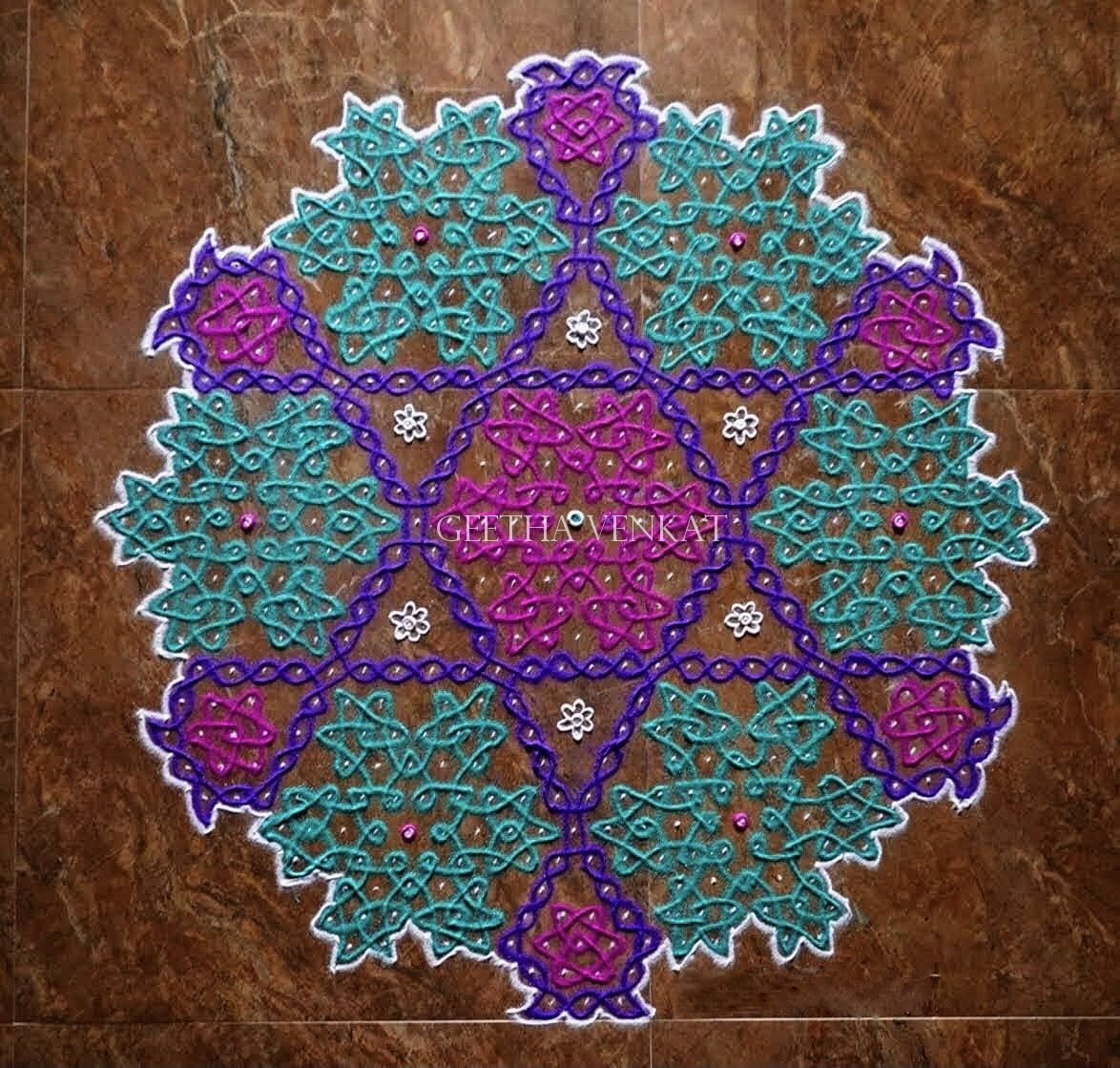
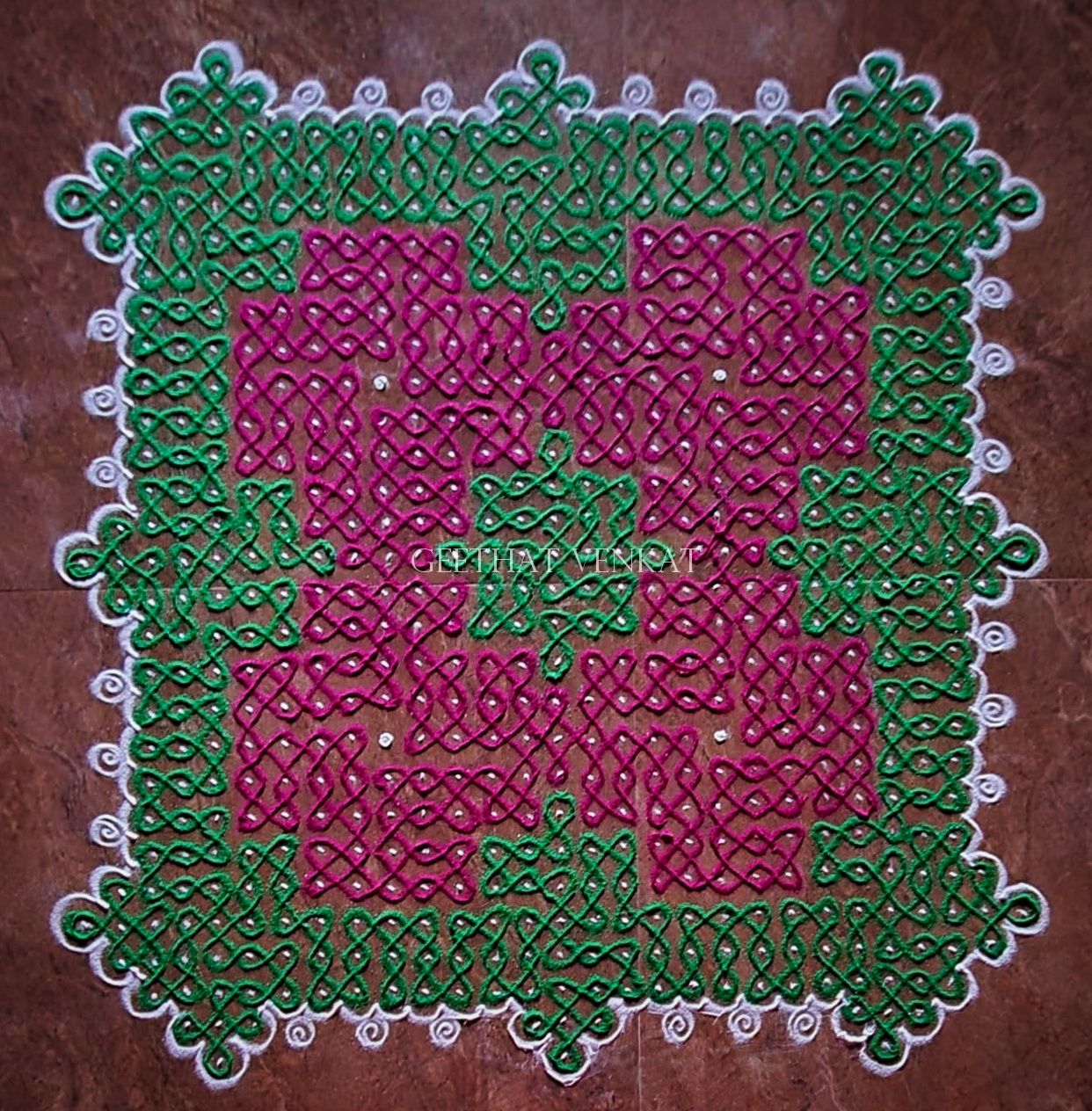
Playing with lines
"It’s just time-pass" they say. Several friends who are experts in sikku kolam organize among themselves challenges such as drawing stylised animal motifs in sikku style kolam. Where the layperson sees only complicated interlacing, the artist imagines a lay-out of lines that shows a surprising graphical prowess.


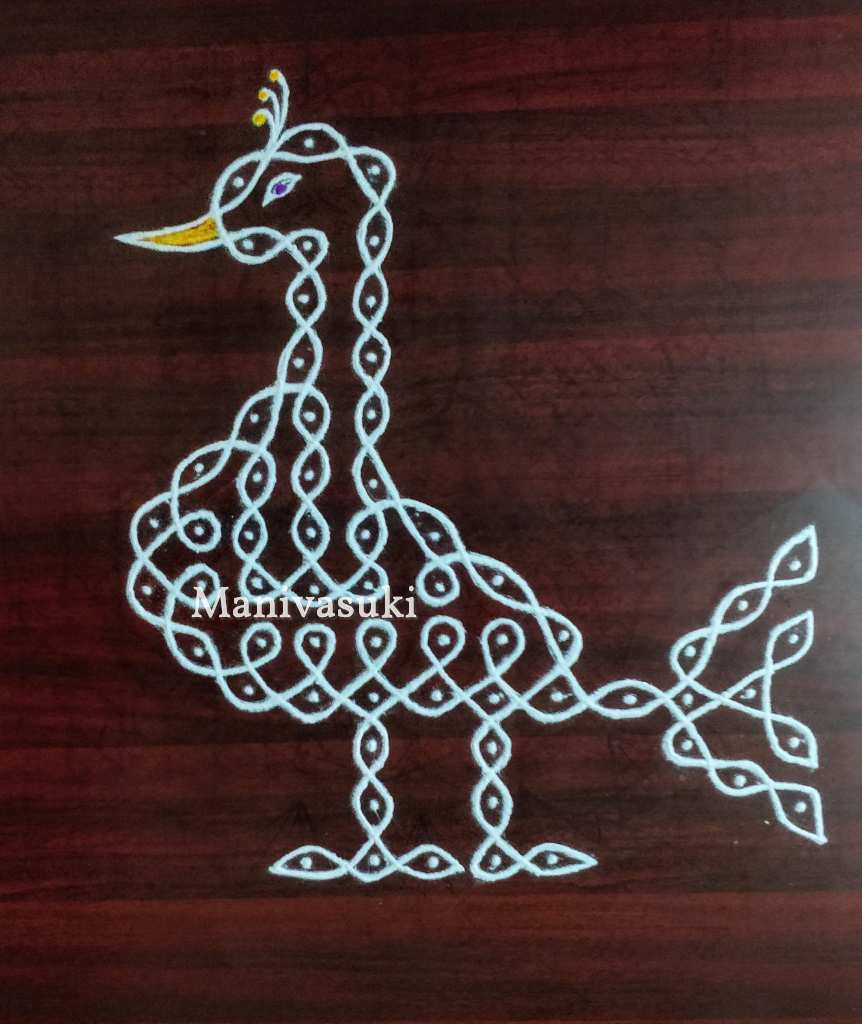
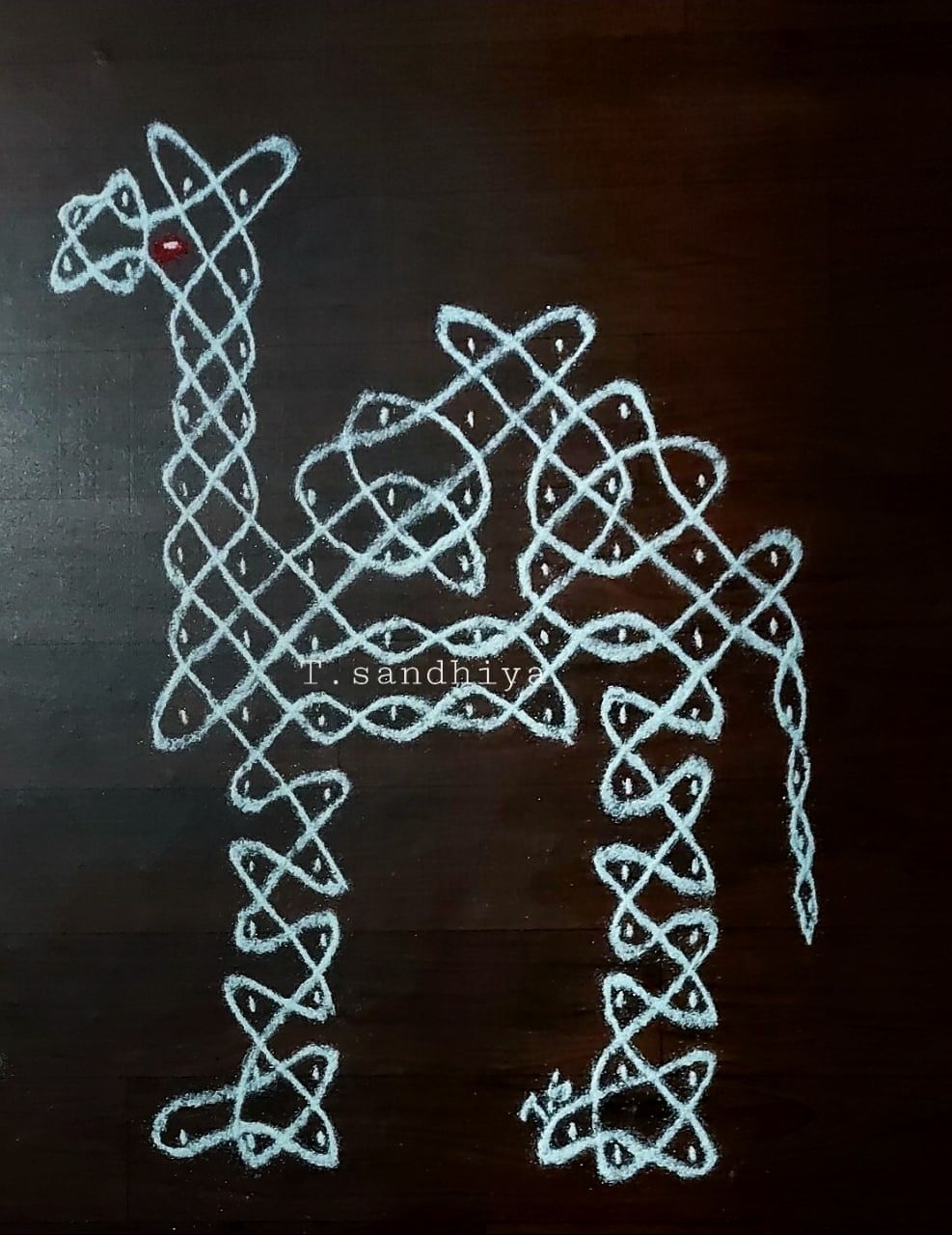
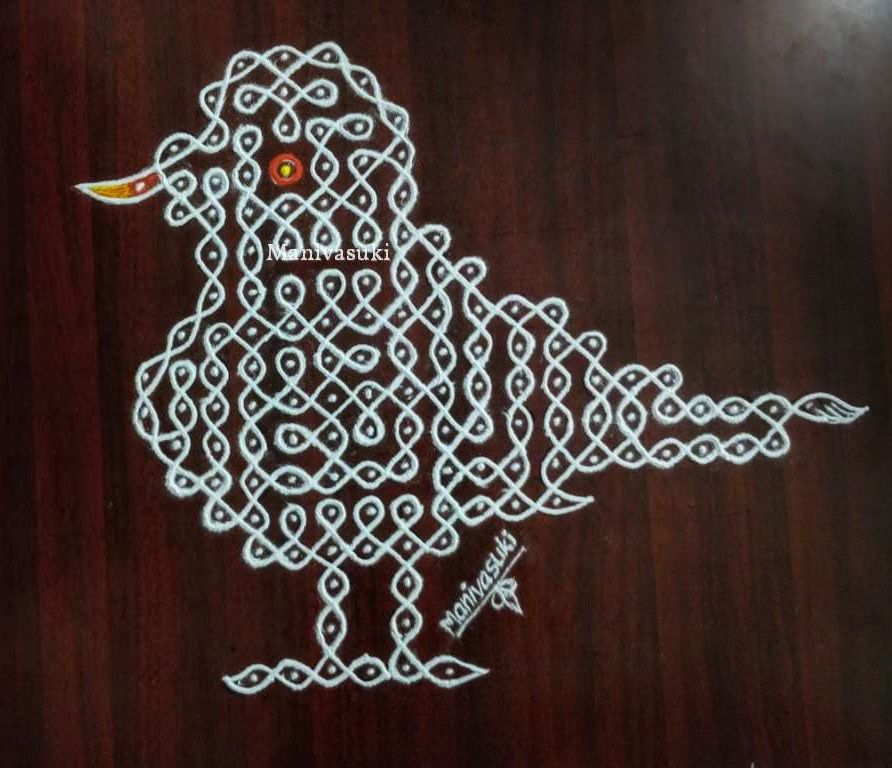
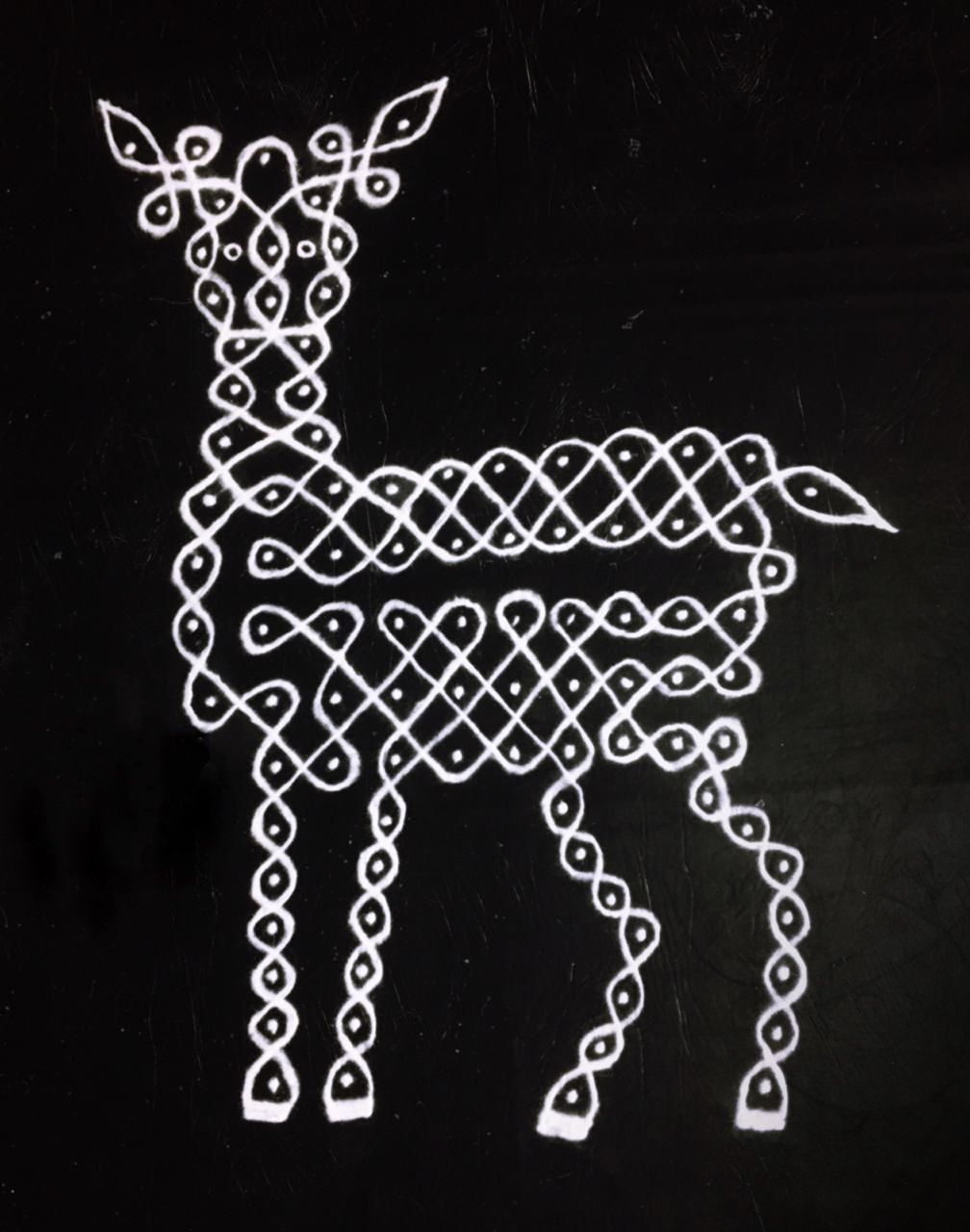
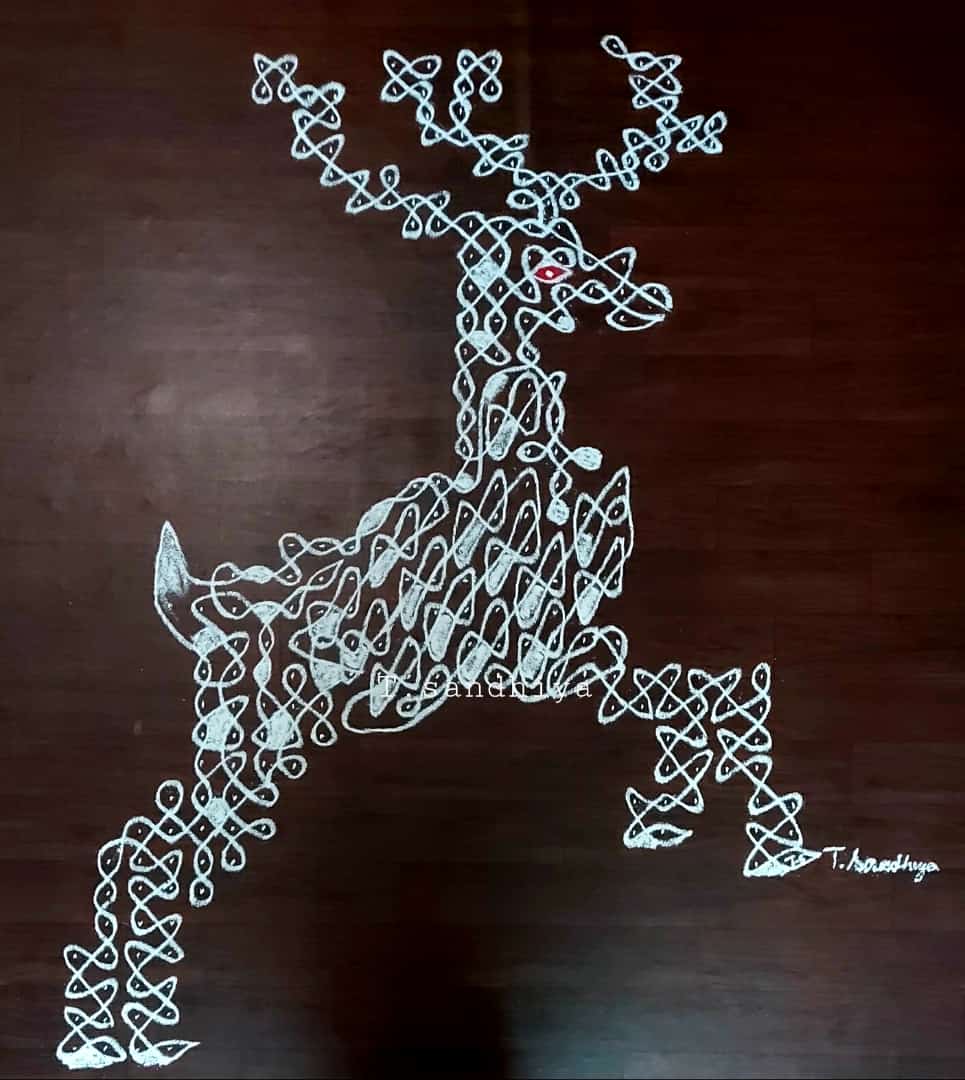
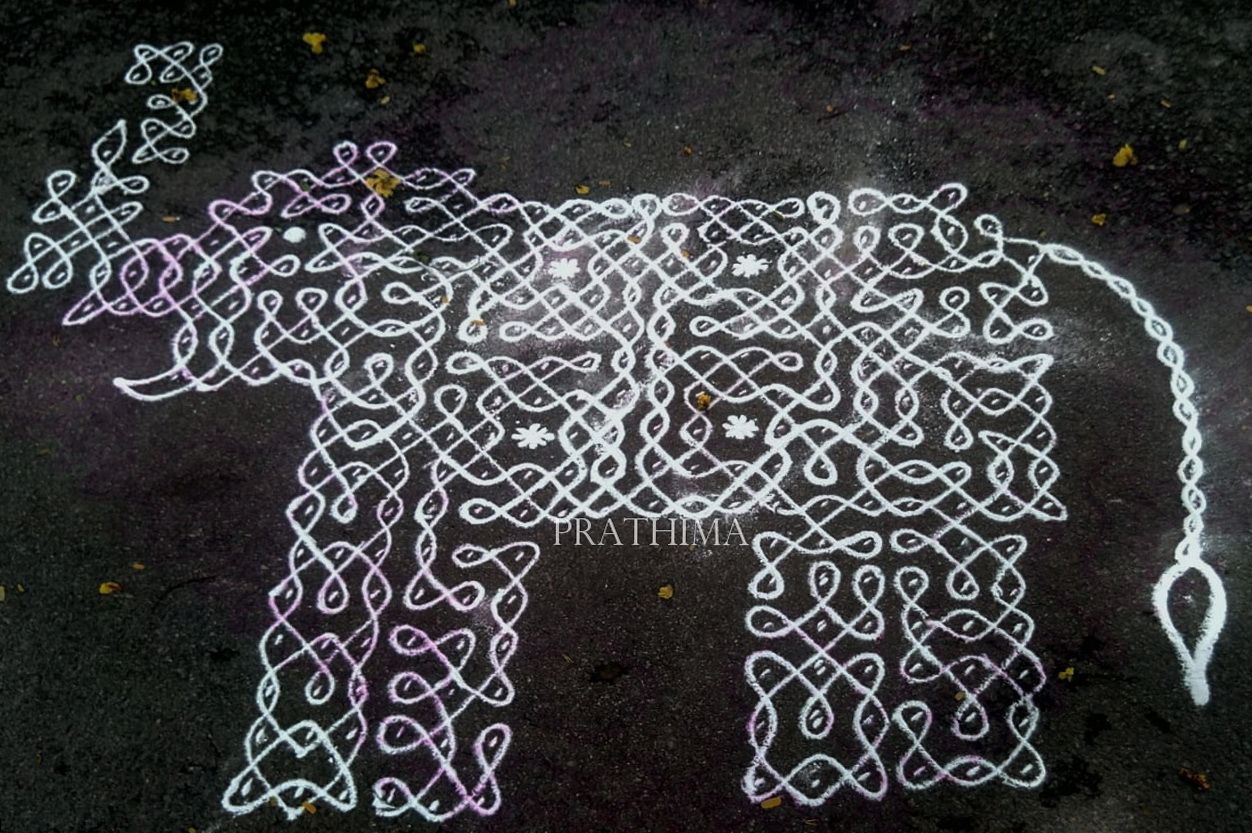
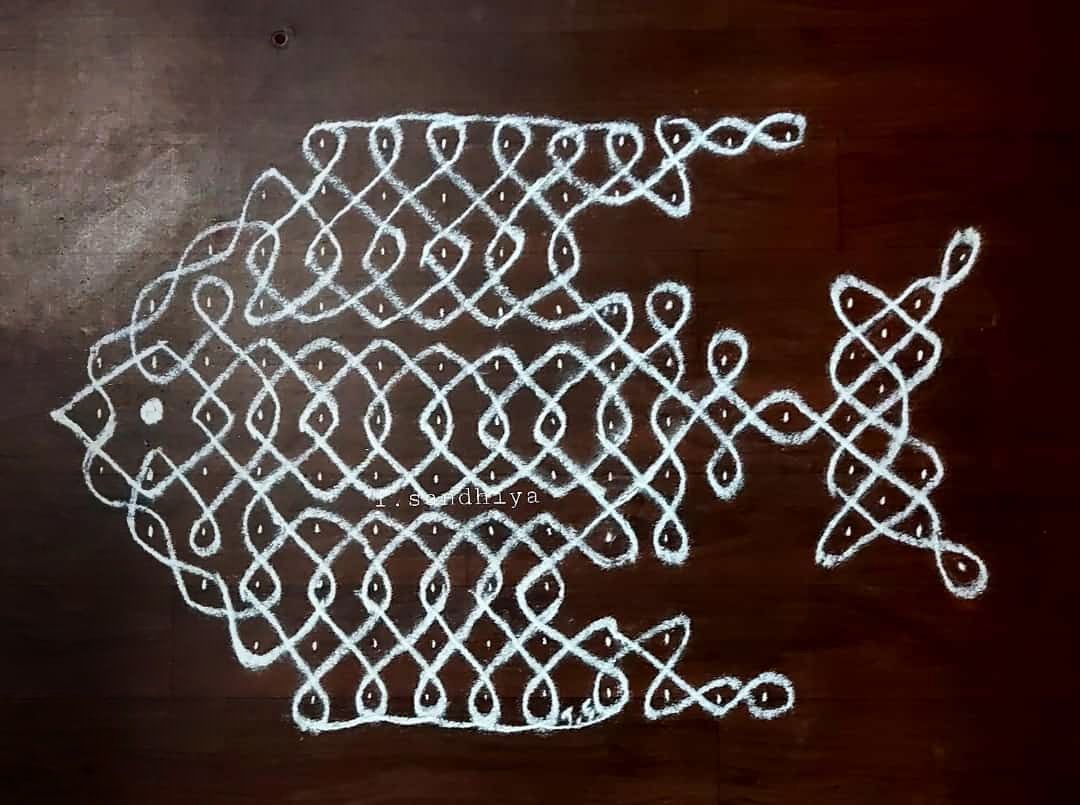
Brahma mudi kolam — the idea of infinity
Some sikku kolam are called Brahma mudi, literally "knots of Brahma". They are drawn with a single, continuous, and uninterrupted line to symbolize nature within its endless cycle; dissolving into primal chaos followed by restoration of order. The knots are not only present in kolam, but they are also the symbol of seamless and unending union that binds the three sacred threads of a Brahmin. During a Hindu wedding, the commitment between a bride and a groom is represented by the ritual of “tying the knot” in the literal sense. The bride and the groom are bonded by tying the end of the sari to the scarf of the groom. Recently, the pandemic broke into our kolam group and took away a talented artist and friend. To honour her memory, all her friends drew a Brahma mudi kolam with the vow that her soul should join in eternity.
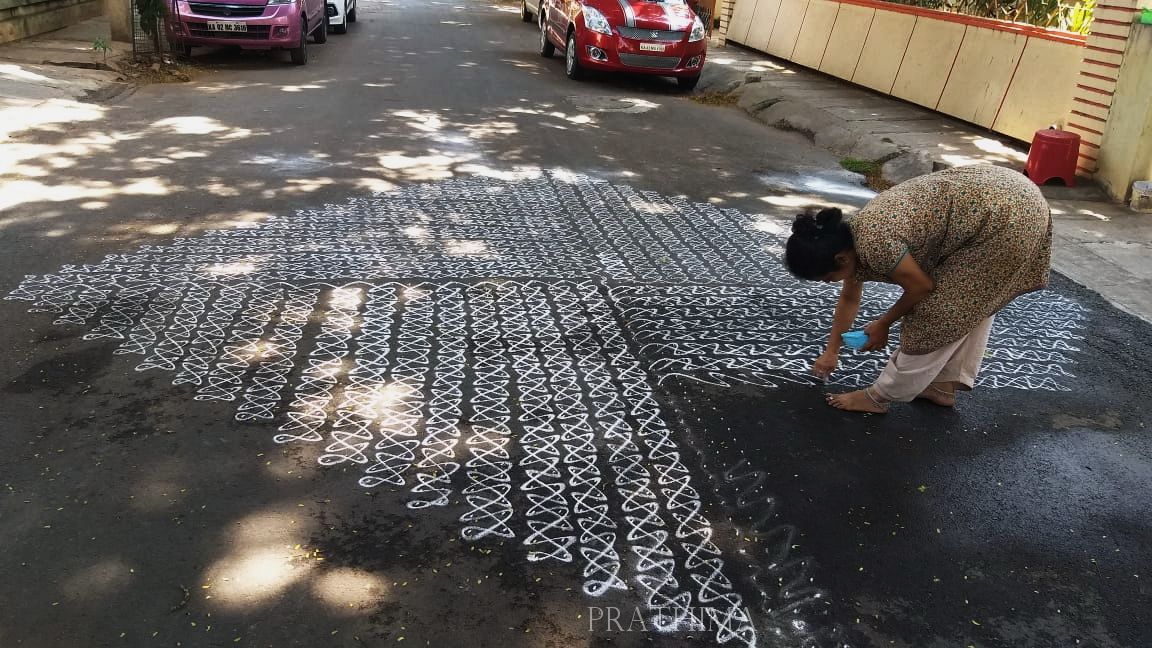
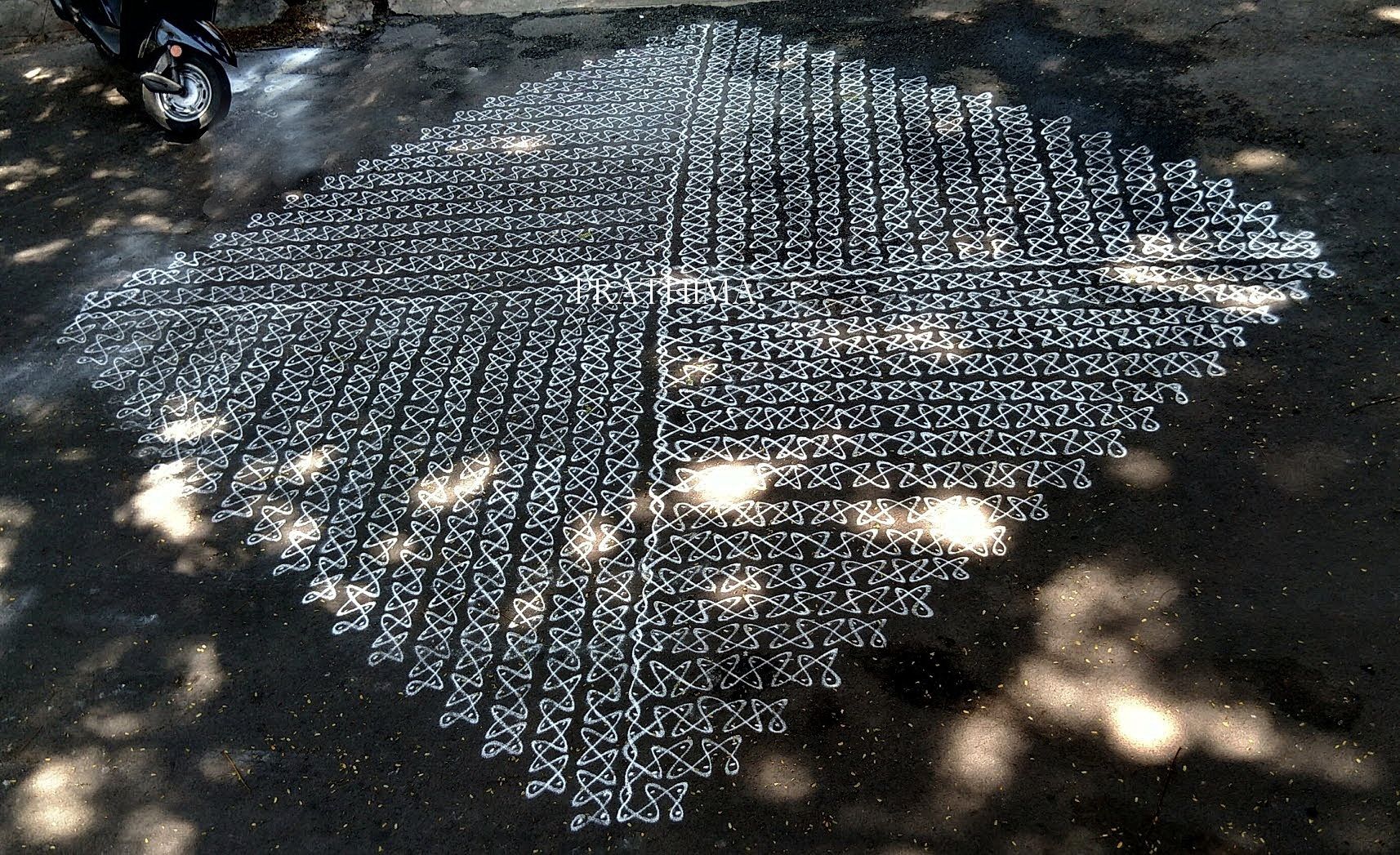
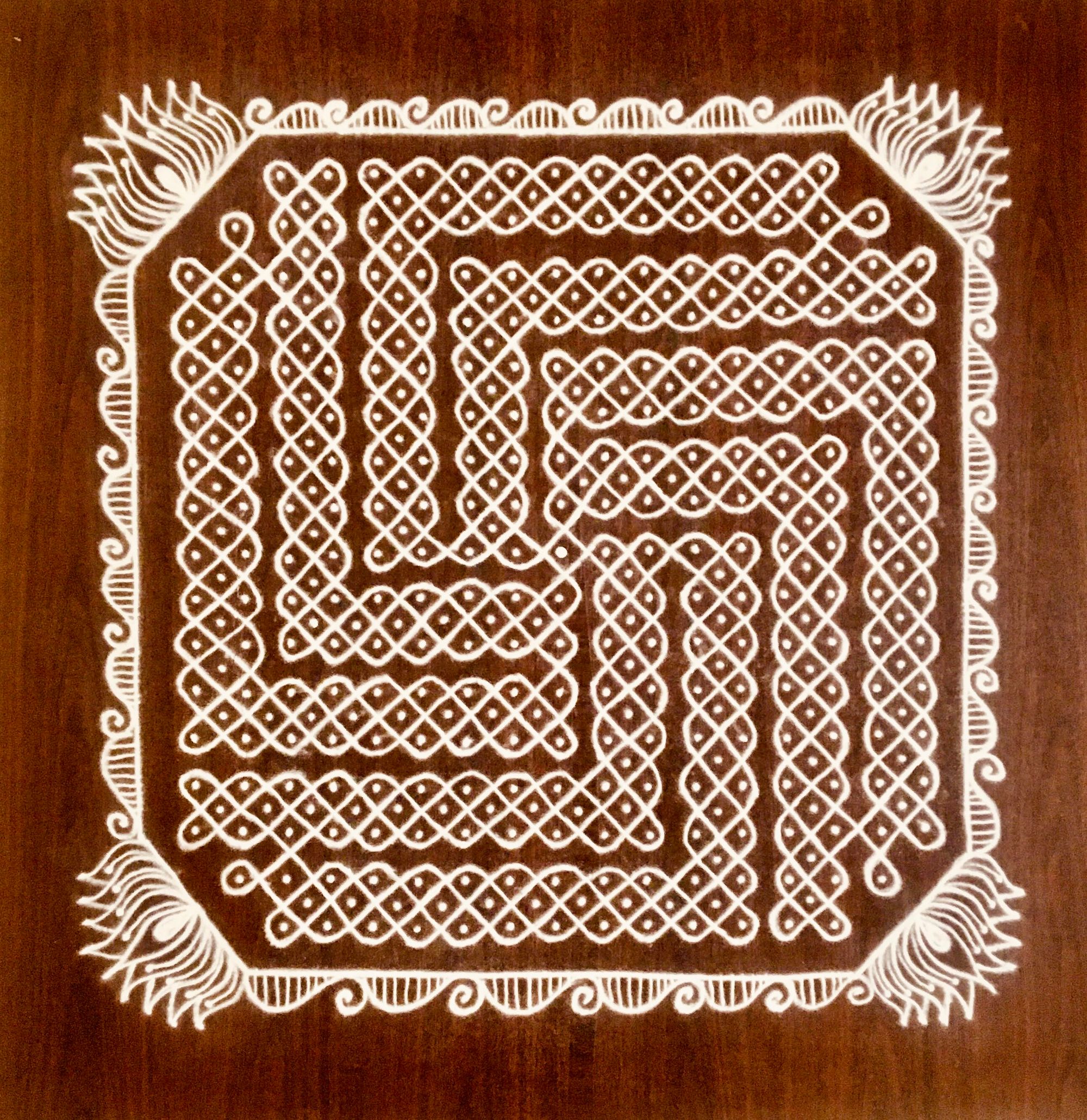

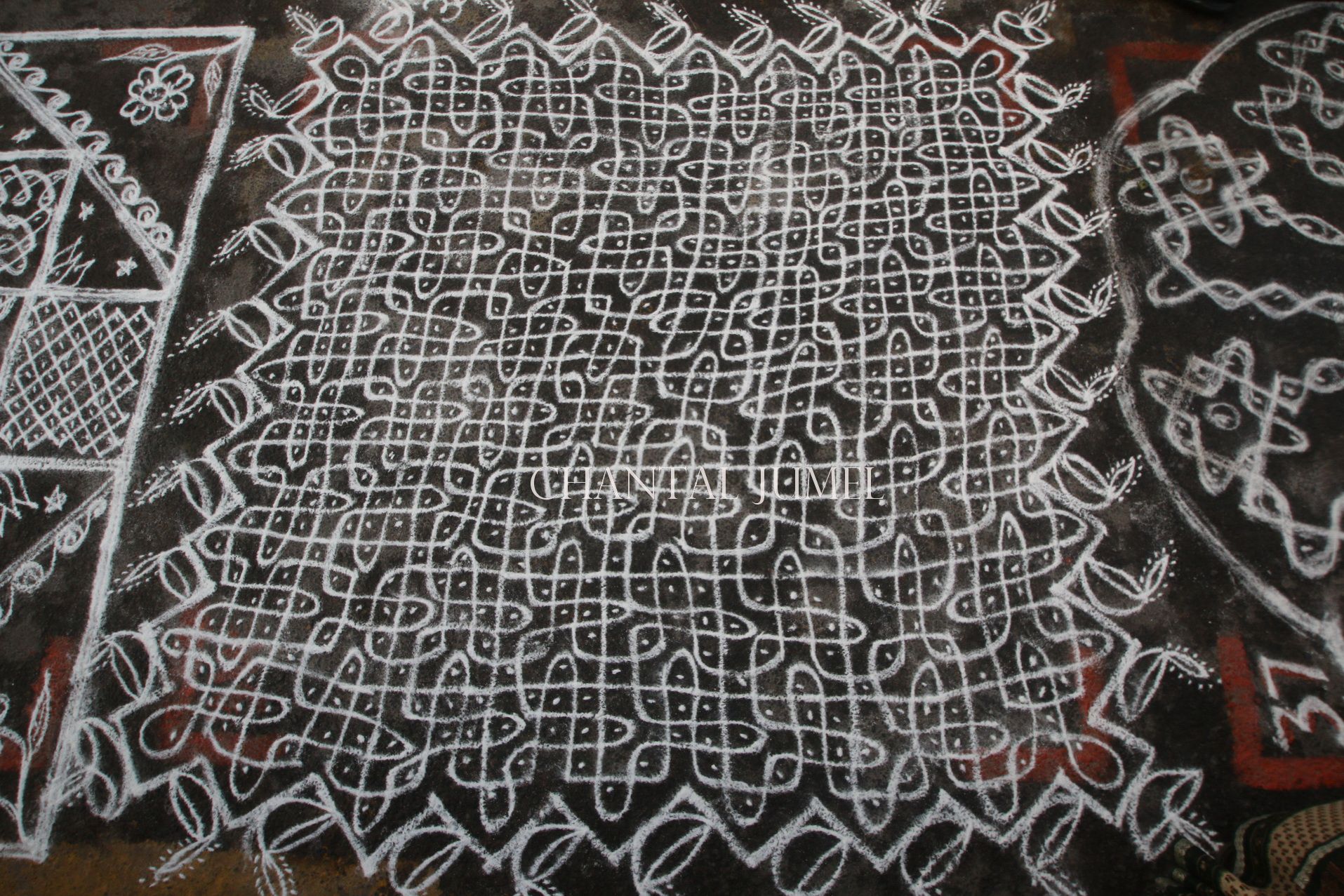
Lines and knots
Certain local beliefs see in these uninterrupted delineations an efficient charm against malevolent forces. During certain rituals in India, the sacrificial area is surrounded by one or several ropes to prevent the entry of evil influences. Actors and dancers almost always wear a talisman made of several threads tied at regular intervals to ward off the “evil eye”. Knots display mixed messages, they represent either constraints and complications, the union of two beings, and a social or a cosmic link.
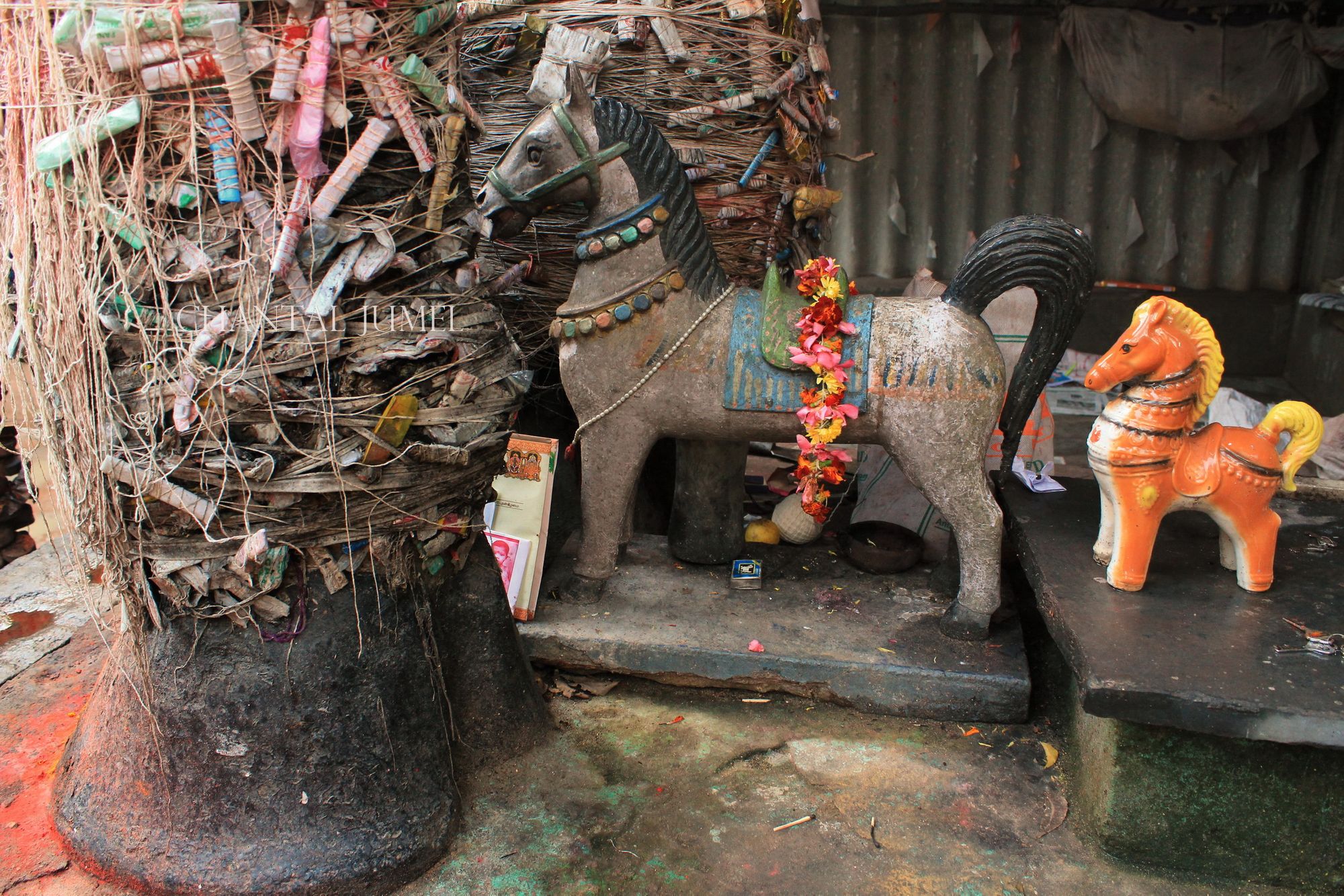
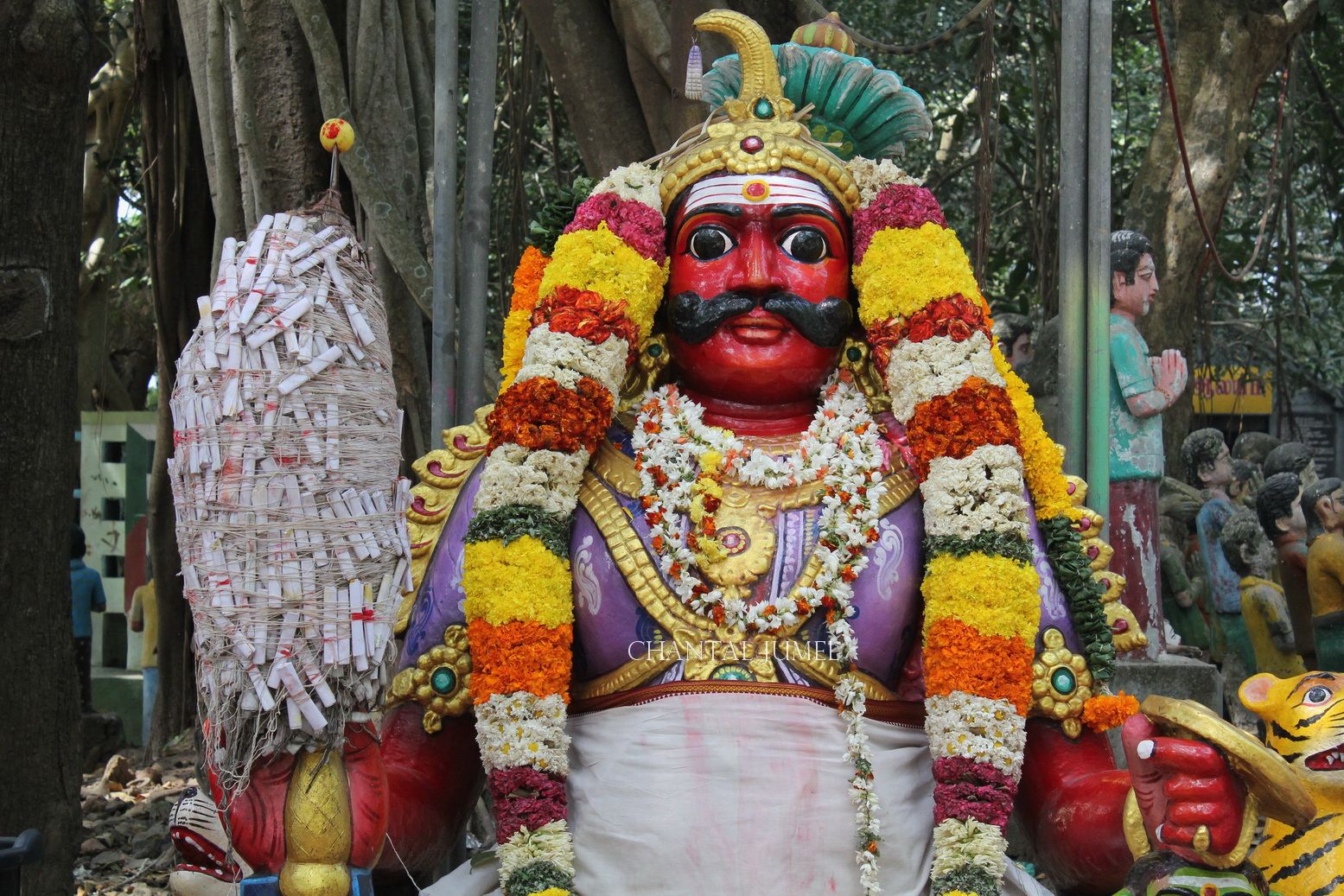
The article is a translated excerpt from my book : "Voyage dans l'imaginaire indien, Kôlam, dessins éphémères des femmes tamoules." (Journey into graphical India, Kôlam, ephemeral drawings of Tamil women.). Publisher Geuthner, (French – Illustrations).
